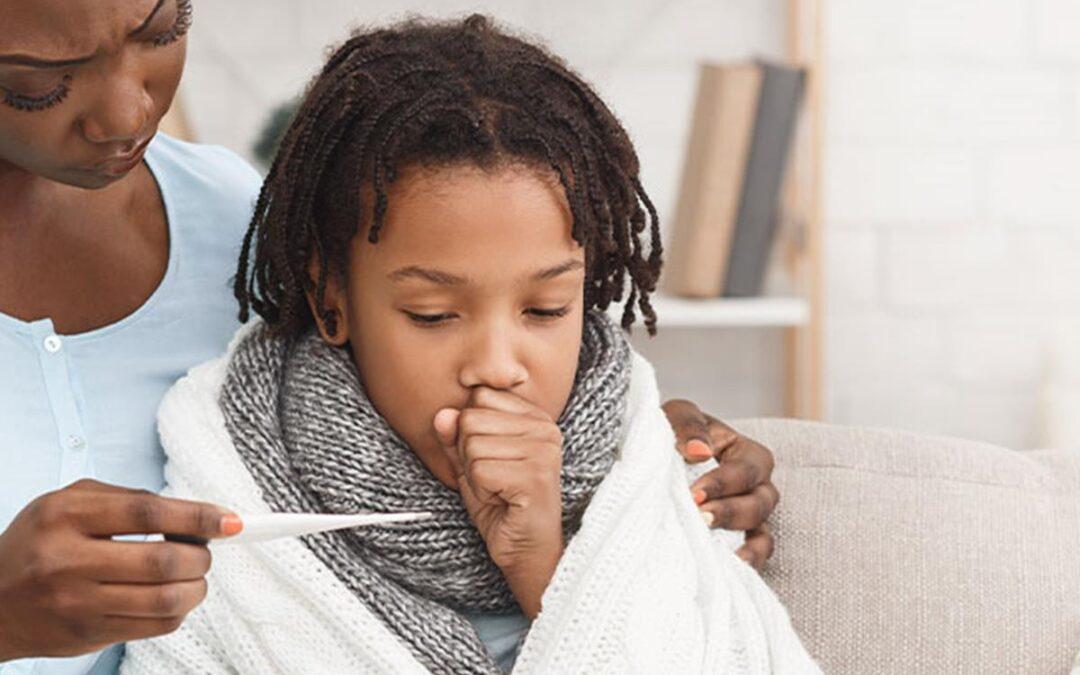
Falling leaves and dipping temperatures are a reminder that cold and flu season is on the way – and it looks like we could be in for a tough one!
The Centers for Disease Control and Prevention (CDC) is already reporting early increases in seasonal flu activity and warns that after two years of relatively low flu rates, reduced population immunity (particularly among young children who may never have had flu exposure or been vaccinated) could bring about a robust return of flu.
As if that’s not worrisome enough, an early rise in respiratory syncytial virus (RSV) among children across the country has news outlets touting a possible “tripledemic” of COVID-19, flu and RSV for this winter.
The common cold (rhinovirus), RSV, flu and COVID-19 are all respiratory viruses with several symptoms in common, such as cough, runny nose and fever.
“For many common viral infections, patients will have relatively mild symptoms and feel better on their own after couple of days,” says Manet pediatrician Charles Bell, MD. “For patients with severe symptoms, testing is needed to confirm a diagnosis and determine the best treatment. Early treatment for COVID-19 and flu can reduce your risk of getting very sick. Testing can also reveal if someone infected with more than one virus at the same time.
“If you have questions or concerns or if you have severe symptoms, such as high fever or difficulty breathing, call your healthcare provider,” advises Dr. Bell.
So, what should you be on the lookout for?
Cold symptoms are usually milder than the symptoms of flu. People with colds are more likely to have a runny or stuffy nose. Colds generally do not result in serious health problems.
RSV is a common respiratory virus that usually causes mild, cold-like symptoms. In addition to a cough, runny nose and fever, a unique symptom of RSV is wheezing. Most people recover in a week or two, but RSV can be serious, especially for infants and older adults, and it can sometimes lead to severe illnesses such as Bronchiolitis or Pneumonia.
A distinctive sign of the flu is a very high fever. Along with other respiratory symptoms, the flu often causes high fevers, nausea and vomiting, which, though not unique to the flu, is also often worse than with other viruses.
The signs of COVID-19 are similar to flu and RSV, and cannot be distinguished without testing.
The following reminders from the Department of Public Health and the Massachusetts Chapter of the American Academy of Pediatrics may help you and your family prevent illness and stay healthy this season:
1. Vaccinate your children ages 6 months and older against influenza as soon as possible.
2. Vaccinate your children ages 6 months and older against COVID-19; children 5 and older who had their primary series more than 2 months ago should receive an updated COVID-19 booster as soon as possible.
3. Remember, you can get a COVID-19 vaccine and flu shot at the same time.
4. If your infant has been offered treatment with protective antibodies due to their prematurity or another condition, keep on schedule with their monthly treatments.
5. Practice hand hygiene frequently with soap and water or hand sanitizer. Cover coughs and sneezes with a tissue, or if a tissue is not available, cover them with an elbow, not a hand.
6. Clean high touch surfaces in your home frequently with household disinfectants.
7. Keep children home from daycare or school who have fever, especially with a cough, difficulty breathing or shortness of breath, congestion, runny nose, or sore throat, until they are fever-free for 24 hours without medications that reduce fever.
8. Avoid social gatherings if you or your children are ill.
9. Contact your pediatrician or healthcare provider if you believe your child needs medical care. Your provider can offer advice on whether your child needs to be evaluated in person, tested for COVID or flu, and the best location (doctor’s office, urgent care, emergency room) for care.

